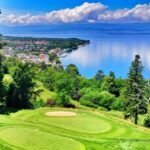Montenegro, meaning “Black Mountain” in Serbian, is a translation that reflects the country’s name, with variants such as “Montenegro” or “Montenegra” being used. The name refers to the iconic Mount Lovćen, near the coastal town of Kotor, which serves as a symbol of national spirit.
Situated in the heart of the former Yugoslavia, Montenegro covers an area of only 13,812 square kilometers, with a population of just around 600,000. Among the six republics of the former Yugoslavia, Montenegro seems to have had the least presence. Perhaps this is due to its small size or historical dependence on other countries. However, despite its modest size, Montenegro holds significant geopolitical importance. It shares borders with Serbia to the north, Kosovo to the east, Albania to the south, Bosnia and Herzegovina and Croatia to the west, and has a southwest coast along the Adriatic Sea—situating it strategically in the southwestern Balkans.
Despite its evocative name, Montenegro has no “Black Mountain” within its borders. The country lacks such a namesake peak, and the mountains are neither black nor extraordinary in appearance. What you do find are wooded green hills and rugged, grayish stone mountains, forming a terrain that is undeniably mountainous. Having traveled from Bosnia and Herzegovina, a similarly mountainous country, we encountered more of the same in Montenegro—endless peaks and hills, predominantly shaped by karst landscapes. This terrain, with its craggy rocks, deep gorges, and barren expanses, poses significant challenges for agriculture. However, eastern forests and grasslands, along with small coastal plains in the west, sustain limited livestock farming, providing a basic livelihood for some residents.
Among the six former Yugoslav republics, Montenegro has one of the most struggling economies. Several factors contribute to this:
- Challenging Geography: The mountainous landscape limits agricultural development, complicates transportation, and restricts large-scale farming.
- Economic Dependence: During the Yugoslav era, Montenegro’s economy was integrated into the broader federal system, relying heavily on collaboration with other republics. Aside from some mining activities, Montenegro failed to build a self-sustaining industrial base, remaining economically dependent.
- Post-Yugoslavia Hardships: Montenegro, alongside Serbia, endured years of Western sanctions and economic isolation, leading to severe hardship and near economic collapse.
However, after leaving the Yugoslav federation, severing ties with Serbia, and stepping away from socialism, Montenegro quickly received financial aid and support from Western nations. While the economy is gradually recovering and living standards are improving, the country remains economically fragile, with much of its economic lifeline controlled by external forces.
Montenegro’s independence marked the final dissolution of the six republics that once formed Yugoslavia. With independence, Montenegro claimed its coastline, leaving Serbia landlocked and looking toward the past. However, the scenery in Montenegro, though it includes both mountains and coastlines, doesn’t offer the most striking landscapes in the region. Its mountains aren’t higher than those in Bosnia and Herzegovina, its waters can’t rival the beauty of the Danube, and its coastal towns pale in comparison to Croatia’s larger, more developed ones.
Due to insufficient investment during the Yugoslav era, many Montenegrin cities and tourist areas remain underdeveloped. Even the capital city, Podgorica, offers little in terms of significant landmarks or impressive attractions, with an overall appearance that feels rather average.
By contrast, the coastal towns of Kotor and Budva, nestled between mountains and the Adriatic Sea, have preserved their old-world charm and stand out as gems along the Montenegrin coast. Dubbed the “twin coastal towns,” these two destinations, while perhaps not the grandest, each possess unique qualities that captivate visitors and elevate Montenegro’s tourism profile. Exploring these two picturesque towns alone makes a trip to Montenegro well worth it, turning a small nation into an unforgettable experience for travelers.
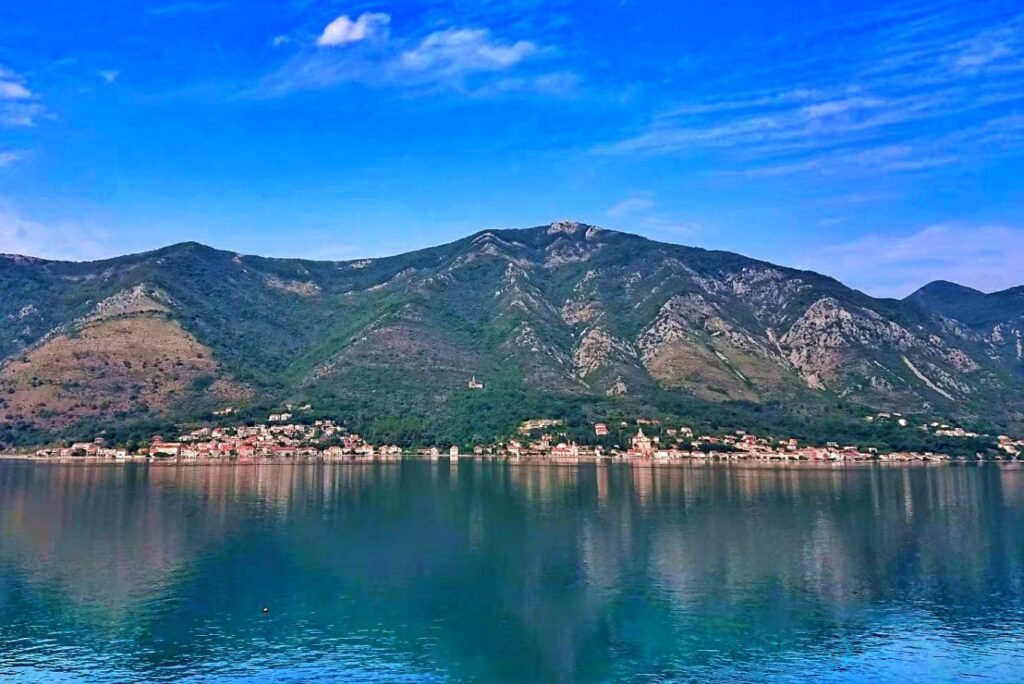
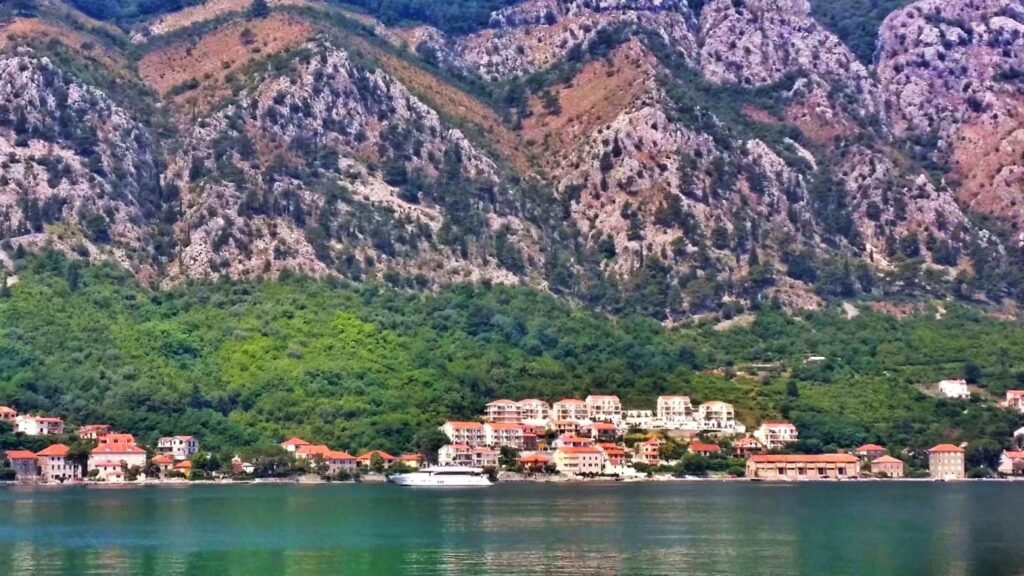
Kotor: The Majestic Gateway of Montenegro
Kotor is undeniably the most beautiful and distinctive travel destination in Montenegro. Nestled along Montenegro’s rugged western coastline, it faces the sea, perched atop cliffs, with the city built into the steep terrain like a fortress guarding the nation’s entrance. Fortification is Kotor’s defining feature, setting it apart from other towns along the Adriatic coast.
If compared to Dubrovnik, Kotor shares similarities in its strategic position, surrounded by mountains and overlooking a harbor. However, while Dubrovnik directly guards the Adriatic Sea, Kotor lies hidden within the inner depths of the Bay of Kotor, specifically inside the more secluded Perast Bay. Reaching the old city from the open sea requires passing through two bays, making Kotor’s location more concealed. Unlike Dubrovnik, which was largely rebuilt after the war and shines with modern splendor, Kotor stands as one of the best-preserved medieval towns in the former Yugoslavia, retaining its original charm and authenticity. The two towns are quite close, with a drive from Dubrovnik to Kotor taking under two hours.
Walking through Kotor’s old town, visitors encounter cobbled streets, ancient houses, towering church steeples, and squares lined with lively bars. Yet the most impressive features are the distinctive city gates and the massive walls encircling the town. The city walls, resembling a stone serpent or an impenetrable barrier, extend from the city along steep cliffs, climbing high into the mountains. These walls stretch for several kilometers, encircling the old town and giving it the appearance of a “Great Wall by the Sea.”
We climbed the ancient stone stairs along the old walls, covering about 1,500 steps to ascend a height of just over 200 meters. The steep slopes and switchbacks tested our endurance, especially as the walls appeared increasingly abandoned after reaching a charming little Catholic church halfway up. Beyond this point, the walls became more dilapidated, making the climb more challenging. Yet the view from the top was stunning, with panoramic vistas of Kotor’s historic town and the glittering bay below.
These ancient fortifications have served as Kotor’s line of defense for centuries. Construction of the walls began as early as the 9th century and continued intermittently until the 19th century, a thousand-year effort to safeguard the town. Kotor’s position as a strategic stronghold ensured it was fiercely contested over the centuries. From the Illyrians to the Romans, the Slavs, and the Ottomans, numerous powers fought for control of the town until Montenegro’s rise established Kotor as a fortified border town and a bulwark against invaders.
Today, Kotor offers more than just magnificent ancient architecture; it carries the weight of a tumultuous history, imbued with stories of bloodshed and tears, resilience and conflict. Every stone along its walls tells a tale, inviting visitors to explore not only the beauty of this medieval treasure but also the profound historical struggles that shaped it.
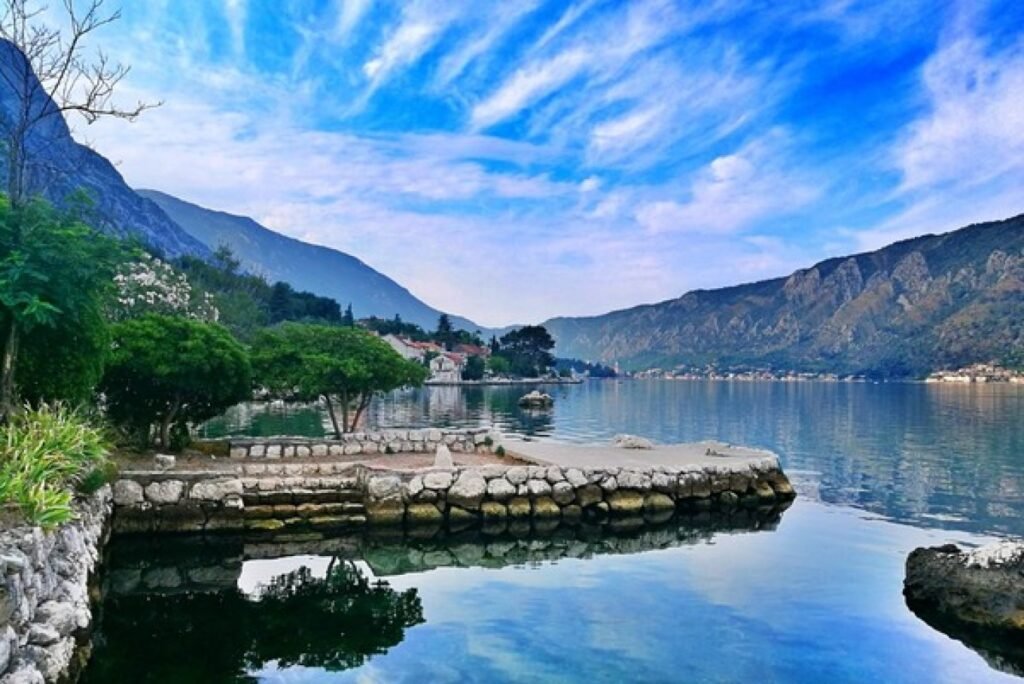
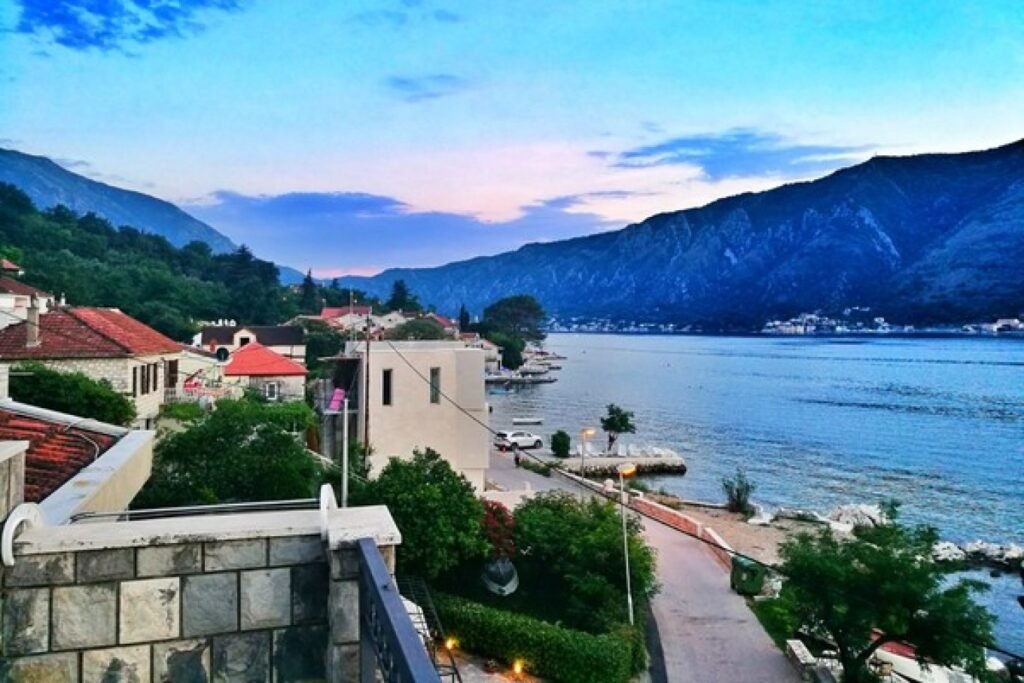
Perast: The Charming Gateway to Kotor
Perast, located just ten kilometers northwest of Kotor, is a picturesque town along the coastal road of the Bay of Kotor. As a key stop on the way to Kotor, it is renowned for its old-world charm and serene ambiance.
Perast boasts numerous hotels and is a hub for yachts, making it a popular destination for travelers. Its tranquil streets, lined with historic architecture, draw visitors seeking a peaceful retreat. The town offers stunning views of the surrounding bay, creating a perfect blend of natural beauty and historical allure.
The highlights of Perast are its two iconic islets: St. George Island and Our Lady of the Rocks. These postcard-perfect islands, situated in the middle of the bay, are must-see attractions for those exploring the region. Both islands offer unique histories and scenic views, providing visitors with an unforgettable experience amid the turquoise waters of the Bay of Kotor.
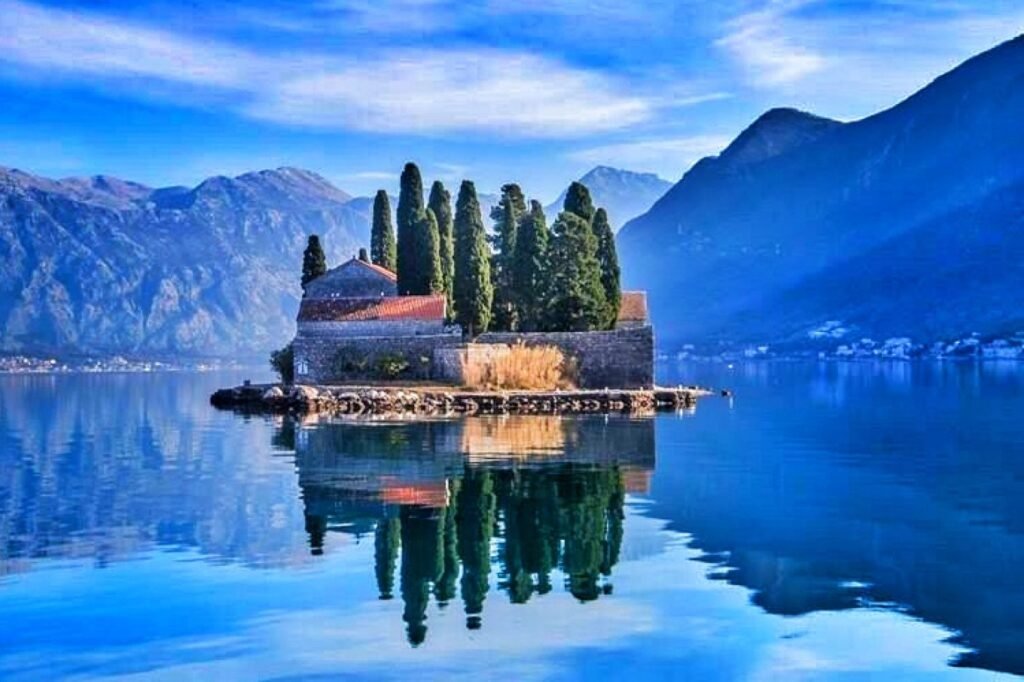
Island of Saint George
The Island of Saint George is one of the two picturesque twin islets in the middle of the Bay of Kotor. This natural island is home to the Benedictine Monastery of Saint George, which has stood there since the 12th century.
Both the island and the monastery remain closed to tourists, adding to their aura of mystery and tranquility. With no boats docking on its shores, the island maintains a serene and undisturbed atmosphere. Visitors can only admire its beauty from a distance, appreciating the peaceful charm it radiates across the bay.

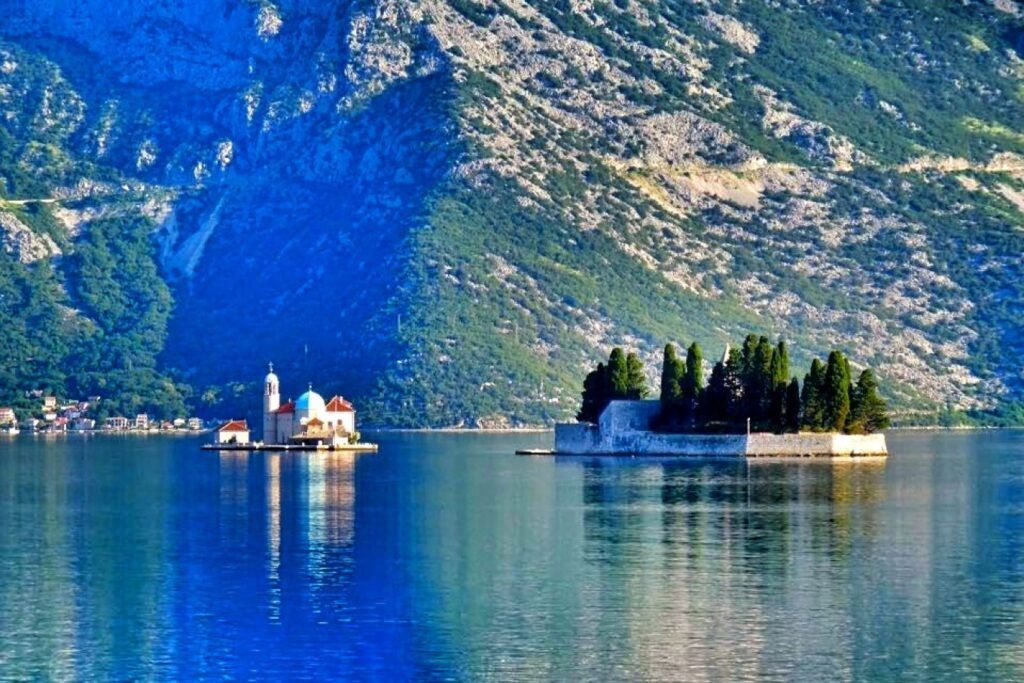
Our Lady of the Rocks
Unlike the Island of Saint George, which remains natural and off-limits, Our Lady of the Rocks is a man-made islet and the other half of the twin islands in the Bay of Kotor. This artificial island was created using shipwreck debris and rocks.
On the island stands the Church of Our Lady of the Rocks along with the Ostrovo Museum. Visitors can take a boat ride to the island for a fee of 5 euros, allowing them to explore the church and museum while enjoying panoramic views of Perast and the surrounding scenery from this unique vantage point.
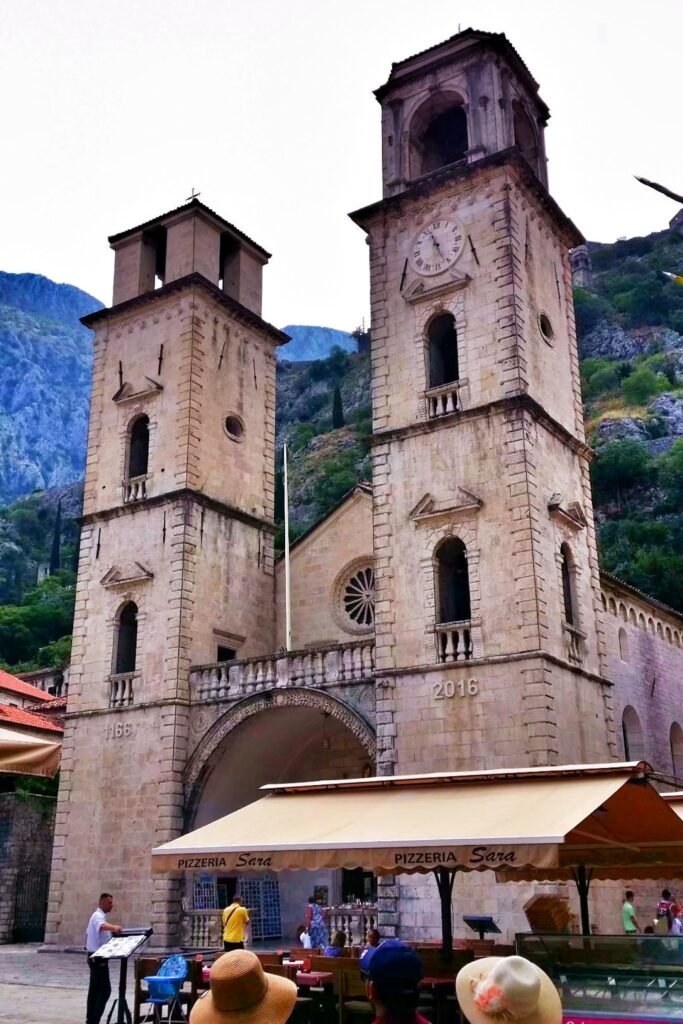
Cathedral of Saint Tryphon
The Cathedral of Saint Tryphon, also known as the Kotor Cathedral, is a Romanesque Catholic church that dates back to 1166. Over the centuries, it has suffered multiple instances of damage but was repeatedly restored, retaining much of its medieval character. However, the two Baroque-style bell towers reveal noticeable differences in their restored tops, hinting at the diverse influences over time.
Inside the cathedral, visitors can find valuable religious artifacts and well-preserved frescoes, making it a must-see attraction for those exploring Kotor.
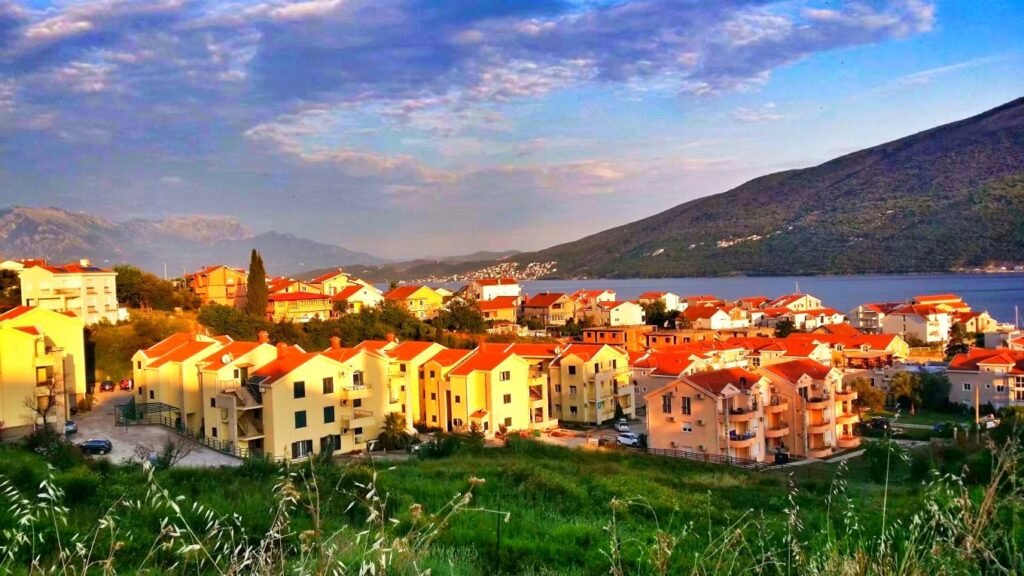
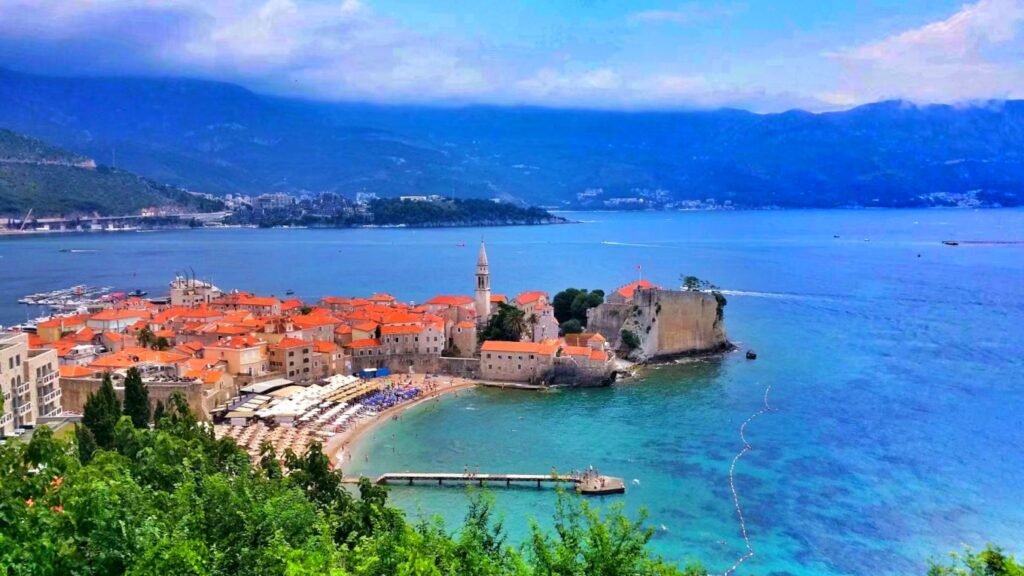
Budva: The Oldest Town on the Adriatic Coast
Budva, situated on the Adriatic Sea, is the twin coastal city to Kotor along Montenegro’s western coast. Despite being home to only 15,000 residents, Budva draws global tourists with its famous Old Town, which, though occupying just a small corner of the city, has become Montenegro’s most popular destination, even surpassing Kotor in fame.
What surprises many is Budva Old Town’s ancient history, predating Montenegro’s statehood by over 2,500 years, making it the oldest coastal town on the Adriatic. Its origins trace back to the 5th century BC when, according to legend, a Phoenician prince exiled from Greece founded the town. Later, the Romans arrived, leaving traces of both Greek and Roman civilizations.
However, it was the Venetians who left the most enduring mark. From the early 15th century to the late 18th century, they ruled Budva, shaping the town’s architecture and layout. The stone walls, which once defended against the Ottoman Empire and Austro-Hungarian forces, withstood both World Wars when Budva served as a coastal defense hub in the fight against fascism. Ironically, the walls’ most devastating destruction came not from war, but from a powerful earthquake in 1979, which razed much of the Old Town. What stands today was rebuilt in the 1980s to replicate its original form.
These reconstructed buildings retain the Mediterranean charm in their walls, balconies, and courtyards, exuding a blend of elegance and romance. Much of the restoration was financed by wealthy European elites, who, drawn by Budva’s pleasant climate and scenic beauty, bought properties here, transforming the former fishing village into a haven for the affluent, earning it the nickname “Kuwait of Montenegro.” Their wealth and influence have kept the town looking fresh and vibrant, making Budva a unique attraction on the Adriatic.
From a hillside viewpoint along the coastal road, Budva’s Old Town offers a picturesque sight. Nestled on a peninsula, its red-tiled roofs and white-walled houses gleam brightly against the azure sea and sky. Yet, upon entering the Old Town, visitors may encounter a different experience. Parking is scarce, with long waits even outside the town. Narrow, winding streets often lead to dead ends, and the mix of architectural styles reveals the lack of planning during reconstruction.
Despite these challenges, tourists flock to Budva in droves. The town’s limited infrastructure and modest amenities seem no match for the allure of its natural beauty. Encircling the Old Town is a stunning, expansive white-sand beach stretching over 10 kilometers along the coast, warmly embracing the town in its inviting shores. With blue skies, crashing waves, sun, and sand, it’s no wonder visitors are drawn here—no matter how old the town or challenging its streets may be.
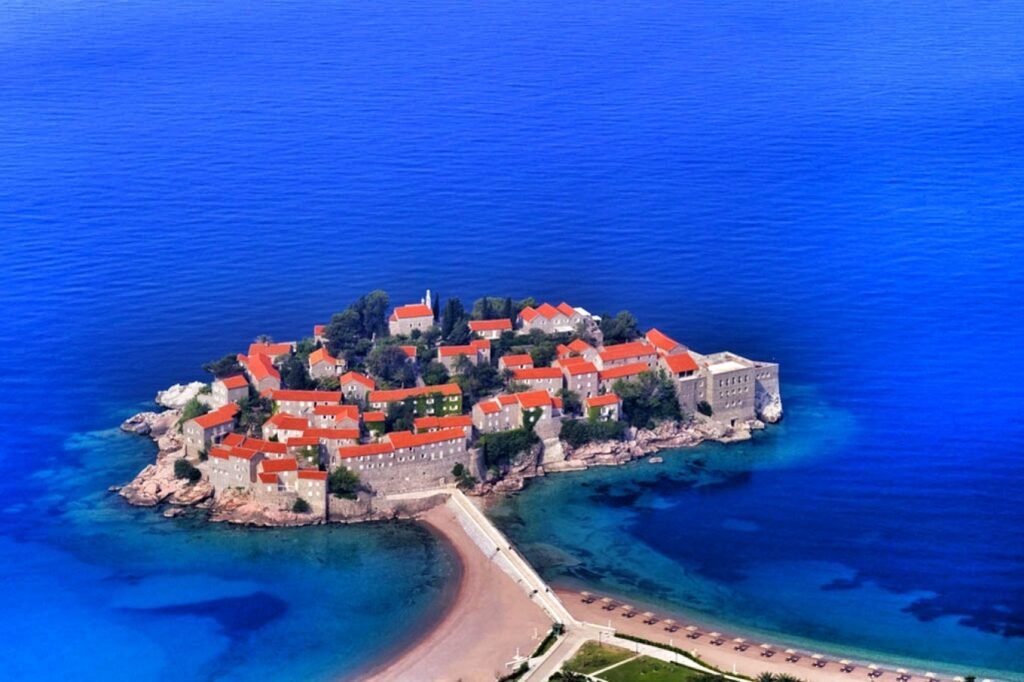

Sveti Stefan Island
Entrance Fee: 10 Euros
Sveti Stefan Island, also known as Saint Stephen Island, lies about 10 kilometers from Budva’s Old Town. It is an awe-inspiring destination. From the hills or a distance, the sight of red-tiled houses clustered on the island against the backdrop of the blue sky and sea resembles a ruby set in the ocean—truly a breathtaking scene.
Legend has it that the island was once a pirate hideout, later becoming a small fishing village, and eventually transformed into an exclusive luxury resort. Many celebrities have chosen this idyllic spot for their vacations.
The island is now connected to the mainland by a narrow sandy causeway, turning it into a peninsula. Guests staying at the resort enjoy unrestricted access, while day visitors can only explore the island during designated hours by purchasing a ticket.
Regular bus services operate between Budva Old Town and Sveti Stefan, making it easy and convenient for tourists to visit this picturesque destination.
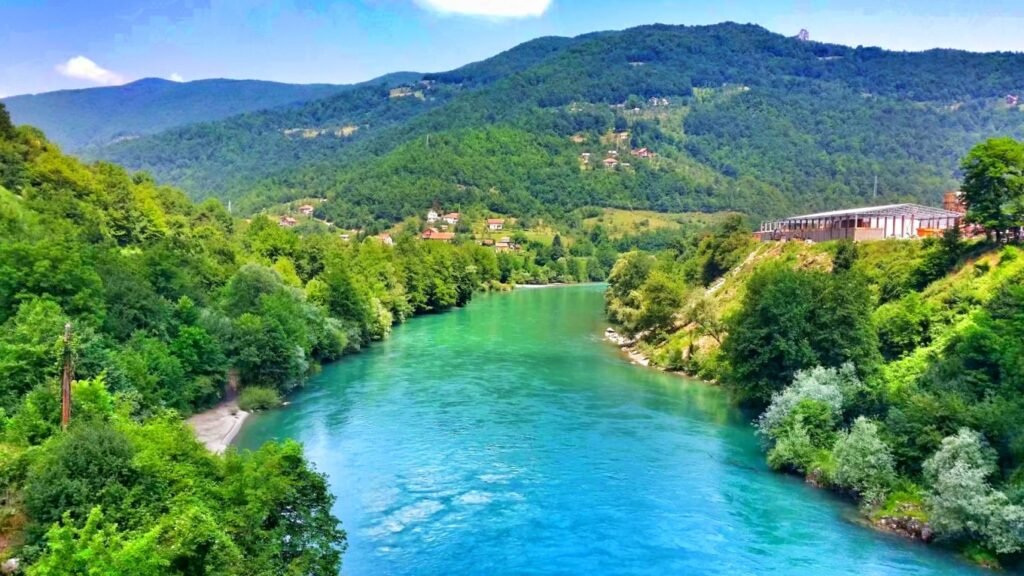
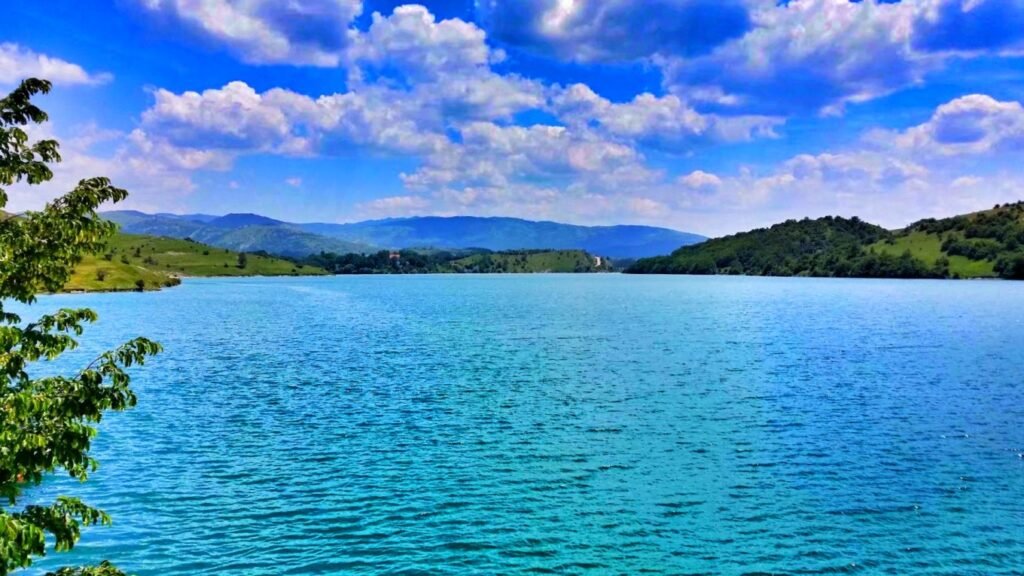
Podgorica
Podgorica, the capital of Montenegro, is the smallest among the former Yugoslav capitals but stands as the largest city in Montenegro, home to a third of the country’s population. Nestled along the shores of Lake Skadar, this flat basin surrounded by rugged mountains serves as a rare oasis in a landscape dominated by peaks and valleys. In the 9th century, when the Slavs first established the Kingdom of Duklja in Montenegro, they chose this region as their seat of power. Located just 40 kilometers from the Adriatic coast, Podgorica forms a strategic triangle with Montenegro’s famous twin coastal towns.
Podgorica’s recorded history is relatively recent, with mentions dating back only to the 14th century. From the beginning, the city was intertwined with Ottoman rule, as the Turks not only built the foundations of the city but also deeply embedded Muslim culture into its identity. Ottoman rule persisted until the late 19th century, leaving an indelible mark on local customs and architecture. Even today, the city retains many Muslim traditions and showcases distinct Turkish architectural influences.
After the Ottomans departed, Podgorica’s modern history became closely linked to Yugoslavia. During World War II, the city served as a vital resistance stronghold against fascist forces, which led to relentless bombing that reduced much of it to rubble. After the war, the city was rebuilt and briefly renamed Titograd, in honor of Yugoslav leader Josip Broz Tito. While the name change was symbolic, it reflected the city’s wartime heroism. This name remained until the dissolution of Yugoslavia, when the city reverted to its original name.
The post-war reconstruction brought with it urban expansion and modernization. Podgorica emerged as a modern city, with few traces of its pre-war architecture remaining aside from a couple of surviving mosques. The new architecture, though a blend of different styles from various periods, reflects the orderly, monumental aesthetic typical of Eastern European cities. The city’s development prioritized industry and transportation, resulting in wide streets, symmetrical layouts, and extensive greenery.
Podgorica is notable for its abundant green spaces, with parks, playgrounds, and public gardens reportedly covering nearly one-seventh of the city’s total area—a rare distinction that makes it one of the most livable cities. However, prominent landmarks made of concrete and steel are relatively scarce. One notable exception is the Orthodox Cathedral on the city’s outskirts. The cathedral, with its white walls and green domes, stands imposingly in a large square surrounded by open land. Though still under construction inside, its impressive exterior conveys a sense of grandeur and authority, as if guarding the city like a sentinel.

